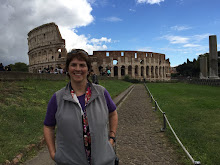At its core, this book is about the struggle to understand cultures other than our own. Not understanding or even trying to understand; believing that our culture is the "best" culture and our medicine is infallible can lead to tragedy, as it did in the case of Lia Lee.
Lia's parents and older siblings came to California from a refugee camp after fleeing Laos after the Vietnam War, where many Hmong were recruited by the CIA to fight for the American side both on the ground and as trained pilots. They believed they would be taken care of by the Americans after the war; coming to America was an obvious choice for them. Lia's parents, Foua Yang and Nao Kao Lee didn't speak, write, or read English. They came to Merced, California because there was a large Hmong population and, most importantly, family. Lia was their first child born in America, in 1982. Lia began have seizures after a few months at home. Her parents believed a dab (an evil spirit) had taken her spirit away, and that is what made her sick. Their culture also believed that those who had this sickness were special, and would be a shaman. Not only did the shaman have special abilities to fetch a spirit back to an ill person, but they had empathy for those who were ill, because they themselves suffered from seizures.
The medical staff at Merced Community Medical Center weren't trained to deal with different cultural beliefs, and the Hmong population in Merced was a whole different ball game for them. Lacking interpreters at the hospital, the language barrier was most of the time insurmountable. What was most difficult, far and away, was the lack of understanding of the spiritual medicine the Hmong believed in; it was at the core of their culture. The modern medicine and practices at Merced were at odds with what Lia's parents felt was the right course of treatment for their daughter.
This lack of understanding proved diastrous to Lia and her family, and to the doctors who treated Lia. Anne Fadiman explains all of this thoroughly, spending time with the Lee family, the doctors and other medical staff who treated Lia. She spent four years pouring over medical reports, staff notes, and the history of the Hmong as a people.
Written in 1997, the updated paperback version has an new afterword from the author, written 15 years after the first publication. She updates us on all of the major players in this saga, including the creation at Merced Community Medical Center of a new program that allows shamans to conduct rituals for Hmong patients. While there is still much to do regarding effective communication and understanding between cultures, this is a great start and a big step forward.
This book is, ultimately, about one family's love for their daughter. It is the tragic nightmare that resulted from everyone trying their best to heal and protect her, but no one asking the important questions and bridging the gap between two vastly different cultures to come to a mutual understanding. It is powerful, moving, and a testament to the importance of belief, spiritualism, and familial love.
Rating: 9/10.
Available in paperback, audio, and e-book.



I find this so interesting and timely. I worked in a hospital in Minneapolis in the early 90s and there was a large Hmong population in the city at that time. The families actually brought live chickens into the hospital room of their loved one and sacrificed it. The hospital worked with the families to make this happen. Pretty amazing!
ReplyDeleteI had heard of this book but have not read it. Anne Fadiman is a wonderful writer. I read her Confessions of a Common Reader and fell for her. Thanks for reminding me to read this one.
ReplyDelete